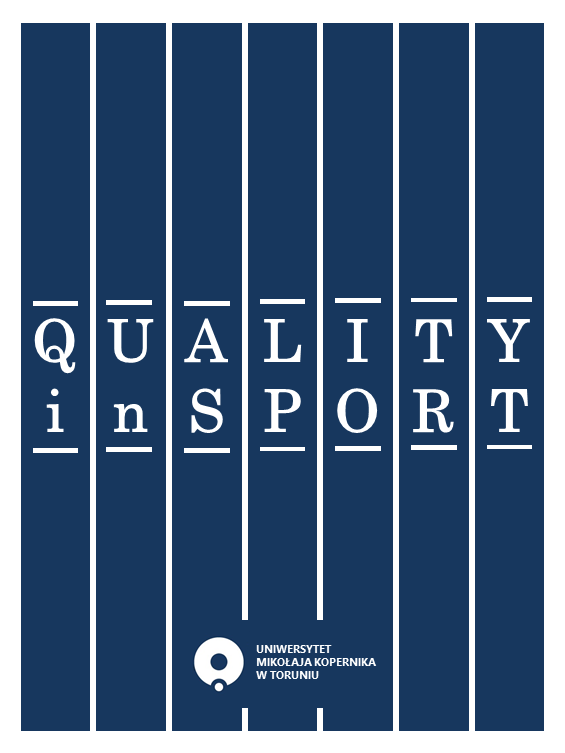Neurobiological mechanisms underlying the influence of parasitic infections on mental disorders: a literature review
DOI:
https://doi.org/10.12775/QS.2025.43.61327Keywords
parasites, Toxoplasma gondii, Plasmodium falciparum, Taenia solium, Trypanosoma brucei, neurobiology, mental disorders, schizophrenia, depression, epilepsy, sleep disorders, neurotransmitters, microglia, neuroinflammatory responses, neurocysticercosis, malaria, African sleeping sickness, neuroimaging, MRI, PET, structural changes in the brainAbstract
Parasitic infections pose a serious health threat worldwide, especially in developing countries, where they affect millions of people. Traditionally, they are seen mainly as something that impacts on the immune system and physiological functions but now more often potential mental health influence is also pointed out. In particular neurotropic parasites, like Toxoplasma gondii, Plasmodium falciparum, Taenia solium i Trypanosoma brucei are capable of modifying brain function which can lead to development of various mental disorders like schizophrenia, depression, epilepsy and sleep disorders. The purpose of this literature review is to analyze the available research on neurobiological mechanisms that show how parasites influence brain function and behaviour. Attention was given to main mechanisms such as changes in neurotransmission, microglial activation, inflammatory responses and structural changes in the brain. In the research results of brain imaging studies (MRI PET) were discussed. They can help understand these mechanisms in detail. Based on literature review, the role of environmental factors and comorbid conditions are also presented. Conclusions indicate the necessity of further research, that will allow understanding of the neurobiological mechanisms of parasitic infections and their influence on mental health.
References
1. Torrey EF, Bartko JJ, Yolken RH. Toxoplasma gondii and other risk factors for schizophrenia: an update. Schizophr Bull. 2012;38(3):642–7.
2. Sutterland AL, Fond G, Kuin A, et al. Transdiagnostic exploration of the association of Toxoplasma gondii with psychiatric disorders. A systematic review and meta-analysis. Eur Psychiatry. 2015;30(3):306–15.
3. White NJ, Breman JG, Looareesuwan S, et al. Malaria. In: Fauci AS, Kasper DL, Longo DL, et al., editors. Harrison’s Principles of Internal Medicine. 19th ed. New York: McGraw-Hill; 2015. p. 1234–58.
4. Kennedy PG. The pathogenesis of African trypanosomiasis. Microbes Infect. 2004;6(1):3–10.
5. Nash TE. Neurocysticercosis and other infections of the central nervous system. In: Tarry J, Warrell D, editors. Manson’s Tropical Diseases. 23rd ed. London: Saunders Elsevier; 2014. p. 853–65.
6. Prandovszky E, Gaskell EA, Martin H, et al. The neurotropic parasite Toxoplasma gondii increases dopamine metabolism. PLoS ONE. 2011;6(9):e23866.
7. Boksa P. Effects of Toxoplasma gondii infection on brain and behavior: A review. J Psychiatry Neurosci. 2010;35(6): 437-45.
8. Wang HL, Wang GH, Li QY, et al. Meta-analysis of infectious agents and depression. Sci Rep. 2014;4:4530.
9. Yolken RH, Torrey EF. Toxoplasma gondii and schizophrenia. Emerging Infect Dis. 2003;9(11):1375-80.
10. Lally J, O’Caoimh R, McDonald C, et al. The role of Toxoplasma gondii in the pathophysiology of schizophrenia: A systematic review and meta-analysis of observational studies. Psychiatry Res. 2017;247:58-66.
11. Newton CR, Krishna S. Malaria in the brain: the pathophysiology of cerebral malaria. Ann Trop Med Parasitol. 1998;92(4):403-8.
12. Molyneux ME, Beare NA, Wootton JC, et al. Neurocognitive sequelae of cerebral malaria in Tanzanian children. Lancet. 2003;361(9355):31–7.
13. Idro R, Marsh K, John CC. Cerebral malaria: mechanisms of brain injury and strategies for improved neurocognitive outcome. Pediatr Neurol. 2010;43(4):1-11.
14. van Hensbroek MB, Gove S, de Lalla F, et al. A study of the long-term consequences of cerebral malaria in children in an area of unstable malaria transmission. Trop Med Int Health. 2009;14(2):193-8.
15. Bouyou-Akotet MK, Ngoungou EB, Nkoghe D, et al. Malaria and cognitive dysfunction in children: an epidemiological study in Gabon. Am J Trop Med Hyg. 2007;77(5):874–7.
16. Nacher M, Singhasivanon P, Maewong R, et al. Neuropsychological and behavioral changes in children after cerebral malaria: a follow-up study in Thailand. Am J Trop Med Hyg. 2001;64(5):307-13.
17. Carpio A. Neurocysticercosis: an update. Lancet Infect Dis. 2002;2(12):751-62.
18. García HH, Del Brutto OH. Neurocysticercosis: updated concepts about an old disease. Lancet Neurol. 2005;4(10):653–61.
19. Flisser A, Soler de la Garza G. Taenia solium and the central nervous system: from cysticercosis to neurocysticercosis. In: Tarry J, Warrell D, editors. Manson’s Tropical Diseases. 23rd ed. London: Saunders Elsevier; 2014. p. 866-75.
20. White AC Jr, Coyle CM, Rajshekhar V, et al. Neurocysticercosis: neglected but not forgotten. PLoS Negl Trop Dis. 2011;5(5):e978.
21. Büscher P, Cecchi G, Jamonneau V, et al. Human African trypanosomiasis. Lancet. 2017;390(10110):2397-2409.
22. Möller B, Rudd S, Griffiths A, et al. Sleep disturbances in trypanosomiasis patients: the role of melatonin. Parasitology. 2011;138(7):919–28.
23. Molyneux DH. Human African trypanosomiasis (sleeping sickness). In: Manson's Tropical Diseases. 23rd ed. London: Elsevier; 2014. p. 1169-81.
24. Chappuis F, Loutan L, Simarro P, et al. Human African trypanosomiasis: epidemiology and control. Lancet. 2005;365(9466):320-30.
Downloads
Published
How to Cite
Issue
Section
License
Copyright (c) 2025 Aleksandra Sosin, Wojciech Bednarz, Katarzyna Torbacka, Katarzyna Rozkosz, Joanna Kaczor, Zuzanna Wróbel, Olga Jakubik, Natalia Wróbel, Patrycja Podlejska, Maja Torbacka

This work is licensed under a Creative Commons Attribution-NonCommercial-ShareAlike 4.0 International License.
Stats
Number of views and downloads: 411
Number of citations: 0



